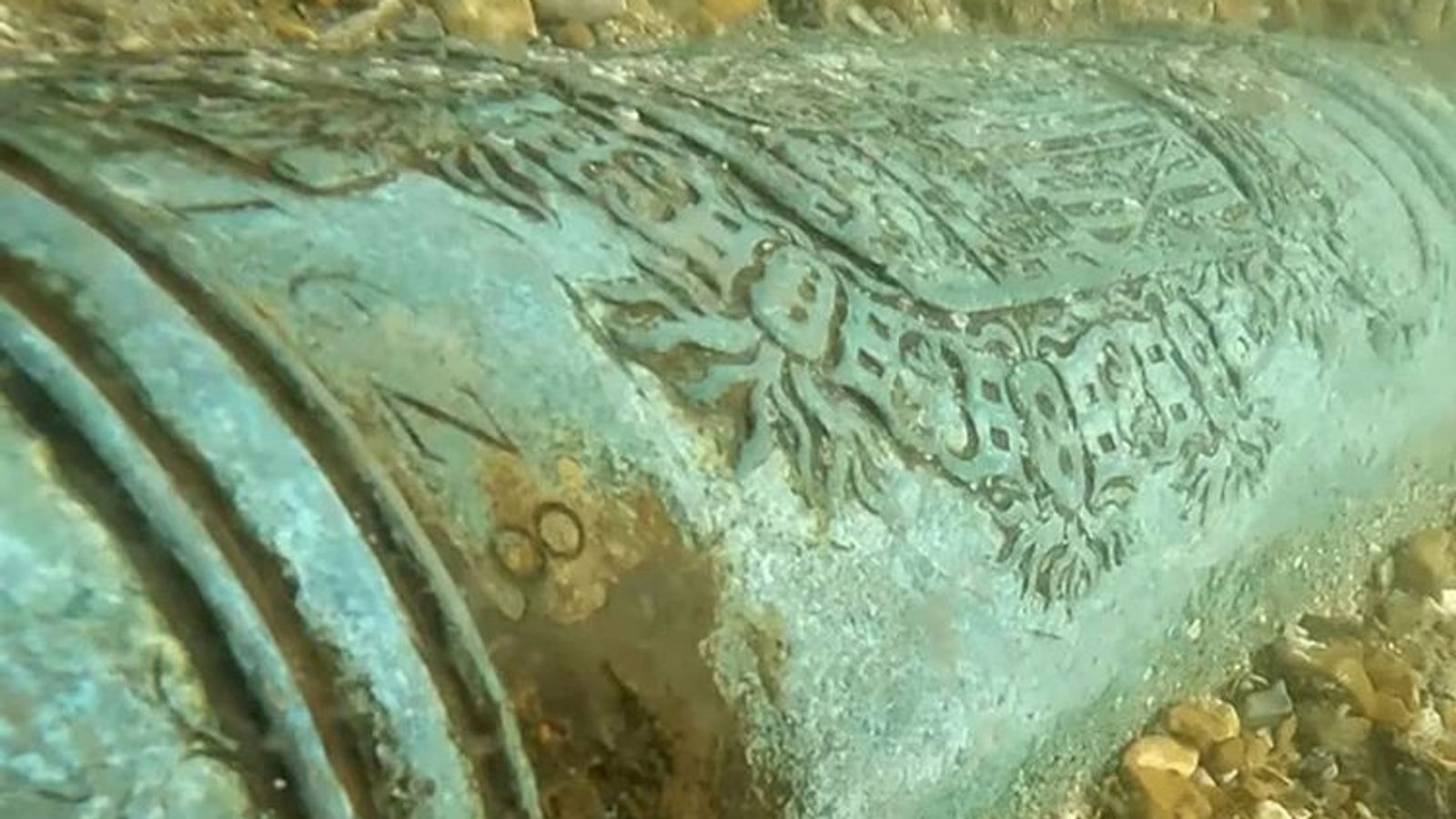Shipwrecks dating back to the 16th and 17th off the Isle of Wight have been granted the highest level of protection by Historic England.
They join a list of 240 sites granted heritage status this year, including London cab shelters, First World War training trenches in Norfolk and a picturesque watermill.
The remains of the protected shipwrecks include cannons and lead ingots and have shed light on trading at the time.
The Shingles Bank in the Needles Channel is a well-known navigational hazard for ships entering the Solent from the west. It is thought both the ships became stranded on the banks before sinking.
Two cabmen’s shelters at Pont Street and Chelsea Embankment in London, built to give Victorian cabbies somewhere to take a break and get hot food, have also been listed.
They are two of just 13 surviving shelters out of the 61 known to have been built in London between 1875 and 1950.
A moss-covered mill in Cumbria will also be protected. The mill became a source of inspiration for artists including John Constable, who famously produced a pencil and watercolour drawing of Coombe Gill Mill in 1806 while on a tour of the Lake District.
A distinctive Edwardian bank, a “tin tabernacle” church from the early 20th century and the former Skipton County Court were also listed in 2022.
Chief executive of Historic England Duncan Wilson said listing the sites recognises their value and means they are protected for the future.
He said: “The variety of listings this year illustrates the rich diversity of our shared heritage and the importance of everyday places – from an Edwardian Bank to a London cab shelter, to a 19th century watermill – that make up the fascinating fabric of our past.
“Places like these create distinctiveness and make us proud of where we live.”
Heritage Minister Lord Parkinson of Whitley Bay added: “Heritage sites tell the story of our country, boost tourism, and help us understand and take pride in where we live.
“By listing buildings and protecting wrecks, battlefields and monuments, we can safeguard our history for future generations to enjoy as well.”





